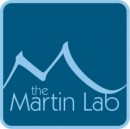The bicelle mixtures typically used in solution-state NMR are made from a mixture of short- and long-chain phospholipids (DMPC and DHPC). These bicelles present an attractive option for SAS NMR studies of membrane proteins under native-like conditions, as they contain planar DMPC regions where membrane proteins can insert, mimicking a biological membrane. However, the traditional low-lipid concentration preparation is limited by a narrow temperature range for optimal alignment (32-36 °C), and is easily disrupted under extended SAS experiments. Previously reported strategies for stabilizing the aligned phase include modification of the lipids, or the use of additives such as cholesterol (CH) or charged amphiphiles. We have recently shown that doping DMPC/DHPC bicelles with cholesterol sulfate (CS), a minor component of mammalian membranes, increases the temperature range over which stable alignment occurs. CS appears to combine the advantages of cholesterol with those of charged amphiphiles; it lowers the gel-to-liquid crystal phase transition temperature of the hydrocarbon chains and introduces repulsive interactions that prevent adjacent bicelles from adhering and precipitating. The phases formed by these mixtures can further be manipulated by adding divalent cations. Ongoing work includes further characterization of bicelle preparations for low temperature alignment, and the use of DLPC/DHPC alignment media to measure structure and dynamics in proteins.
